Kodak vs Instagram
description: a comparison highlighting the decline of traditional photography companies like Kodak against the rise of digital and social photography platforms like Instagram
30 results

The Internet Is Not the Answer
by
Andrew Keen
Published 5 Jan 2015
He personally pocketed around half a billion dollars from the Facebook sale, giving him the instant wealth of a Gilded Age tycoon such as Kodak’s George Eastman. And like Eastman’s late-nineteenth-century startup, Systrom’s early-twenty-first-century photo network has imprinted itself on our everyday lives. The Instagram moment has replaced the Kodak moment. Not a bad return-on-investment from a day spent swinging in a hammock on a Mexican beach. An Untruthful Mirror But the benefits of Instagram for the rest of us are about as foggy as one of Instagram’s Hefe or Toaster filters. “Instagram is focused on capturing the world’s moments,”11 Systrom likes to say.
…
That was the center of the old industrial economy—where Kodak created enormous value and was thus worth $31 billion a quarter century ago. So, back in 1989, those 145,000 unionized Kodak workers in the many research facilities, photo labs, and factories dotting the entire Rochester area were employed to invent and manufacture products that were then sold to consumers. Just as Instagram is the anti-Kodachrome product, so it’s also the anti-Kodak company building an anti-Kodak economy. At first glance, Instagram appears to offer a much better deal for everyone than Kodak. The gray Rochester factory has been upgraded to a Mexican hippie resort.
…
Web 1.0–style portals like AOL or Yahoo have been overshadowed by personalized 2.0 social networks such as Facebook, Tumblr, and the Birches’ Bebo, a social network founded in 2005 that at its 2007 zenith was the most popular network in the United Kingdom, with more than 10 million members, and by 2.0 self-publishing platforms like Reddit, Twitter, SoundCloud, and YouTube. Professional 1.0 resources such as Kodak’s photo processing Ofoto service, Britannica online, and Monster.com have been replaced by collaborative 2.0 equivalents like Yelp, Instagram, Wikipedia, and LinkedIn. Most of these Web 2.0 businesses have pursued a Google-style business strategy of giving away their tools and services for free and relying on advertising sales as their main source of revenue. “The best minds of my generation are thinking about how to make people click ads,” one of Facebook’s engineers dryly notes.76 Like Google, networks such as Facebook and YouTube have become big data companies able to target their users’ behavior and taste through the collection of their data exhaust.
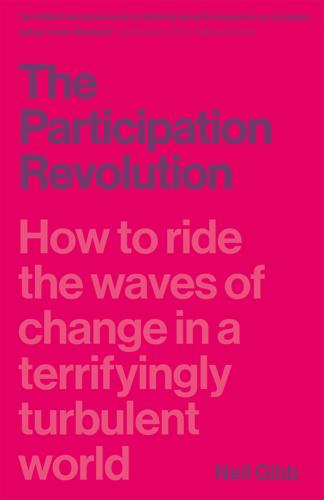
The Participation Revolution: How to Ride the Waves of Change in a Terrifyingly Turbulent World
by
Neil Gibb
Published 15 Feb 2018
It is why the East India Company, a mighty pan-national institution that once ran more than half the world’s trade, went bust in just a few decades. It is what underpinned the global financial crisis. It is why many of today’s corporations won’t exist in 10 years’ time. Kodak had massive resources and, in theory, a deep insight into its global market. It should have been able to knock out something like Instagram as a side project. With its size and resources, it would have been a piffling investment. The reason it didn’t, though, was because it had become obsessed with what it did rather than why it did it. It had become preoccupied with getting people to consume more of its products rather than why they actually wanted to take photographs.
…
How can we make it more social, interactive, creative? How can we make it safer and more secure? Participatory innovation is where Eastman thought from, and it is where Land thought from. If it had been where the execs of Kodak in the 1990s had thought from, when they had the patent for the digital camera in their back pocket, they would never have launched APS. Once you start to look through the lens of participatory innovation, a lot of things make sense. Instagram makes it easier to participate in sharing our experiences with each other. Google makes it easier to participate in search and finding unbiased information. eBay makes it easier to participate in the process of buying and selling stuff.
…
The networks that grew to become Lloyd’s of London and the London Stock Exchange were highly disruptive to the economic order of the day, as northern European protestants, unencumbered by the moral code of Rome, used them to borrow money to invest in trade with the New World. As the economic power shifted north, London became the centre of global trade and Venice started to sink slowly into its canals. However, like Kodak, Polaroid, and Instagram, the thinking the gatherings at Lloyd’s and Jonathan’s coffee house were based on was participatory. They were established to help people participate more easily in commerce and trade. They were born out of the desire to satisfy a pressing social need of the time rather than to try to build a business.

Machines of Loving Grace: The Quest for Common Ground Between Humans and Robots
by
John Markoff
Published 24 Aug 2015
But today Kodak is bankrupt, and the new face of digital photography has become Instagram. When Instagram was sold to Facebook for a billion dollars in 2012, it employed only thirteen people. Where did all those jobs disappear to? And what happened to the wealth that those middle-class jobs created?”33 The flaw in their arguments is that they mask the actual jobs equation and ignore the reality of Kodak’s financial turmoil. First, even if Instagram did actually kill Kodak—it didn’t—the jobs equation is much more complex than the cited 13 versus 145,000 disparity. Services like Instagram didn’t spring up in isolation, but were made possible after the Internet had reached a level of maturity that had by then created millions of mostly high-quality new jobs.
…
A 2011 McKinsey study reported that globally the Internet created 2.6 new jobs for every job lost, and that it had been responsible for 21 percent of GDP growth in the five previous years in developed countries.35 The other challenge for the Kodak versus Instagram argument is that while Kodak suffered during the shift to digital technologies, its archrival FujiFilm somehow managed to prosper through the transition to digital.36 The reason for Kodak’s decline was more complex than “they missed digital” or “they failed to buy (or invent) Instagram.” The problems included scale, age, and abruptness. The company had a massive burden of retirees and an internal culture that lost talent and could not attract more.
…
Similar sentiments are offered by Jaron Lanier, a well-known computer scientist now at Microsoft Research, in the book Who Owns the Future? Both books draw a direct link between the rise of Instagram, the Internet photo-sharing service acquired by Facebook for $1 billion in 2012, and the decline of Kodak, the iconic photographic firm that declared bankruptcy that year. “A team of just fifteen people at Instagram created a simple app that over 130 million customers use to share some sixteen billion photos (and counting),” wrote Brynjolfsson and McAfee. “But companies like Instagram and Facebook employ a tiny fraction of the people that were needed at Kodak.

Exponential Organizations: Why New Organizations Are Ten Times Better, Faster, and Cheaper Than Yours (And What to Do About It)
by
Salim Ismail
and
Yuri van Geest
Published 17 Oct 2014
Another Iridium Moment is the well-documented case of Eastman Kodak, which declared bankruptcy in 2012 after having invented, and then rejected, the digital camera. At around the same time Kodak was closing its doors, the startup Instagram, three years in business and with just thirteen employees, was bought by Facebook for $1 billion. (Ironically, this happened while Kodak still owned the patents for digital photography.) Iridium’s missteps and the epochal industry change from Kodak to Instagram were not isolated events. Competition for many of America’s Fortune 500 companies is no longer coming from China and India. As Peter Diamandis has noted, today it’s increasingly coming from two guys in a garage with a startup leveraging exponentially growing technologies.
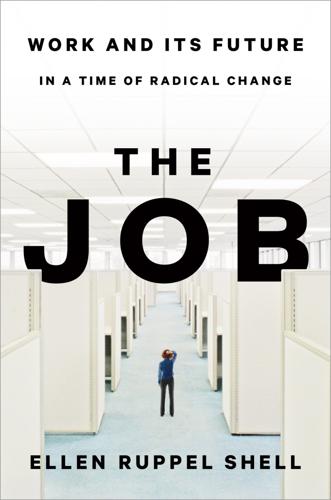
The Job: The Future of Work in the Modern Era
by
Ellen Ruppel Shell
Published 22 Oct 2018
Consider two companies: Instagram, a product of the digital age, and Eastman Kodak, a product of the late industrial age. Instagram, cofounded by Mike Krieger and Kevin Systrom, gathered a small team of young engineers and marketers in a small San Francisco space to create and market a single app through which hundreds of millions of people share billions of photographs. Kodak, founded by George Eastman, gathered as many as 145,000 employees in an expansive industrial park to build an iconic firm that in its heyday furnished 90 percent of the nation’s film and 85 percent of its cameras. Within less than two years of its founding in 2010, Instagram was sold to Facebook for $1 billion—leaving a baker’s dozen of instant multimillionaires in its wake.
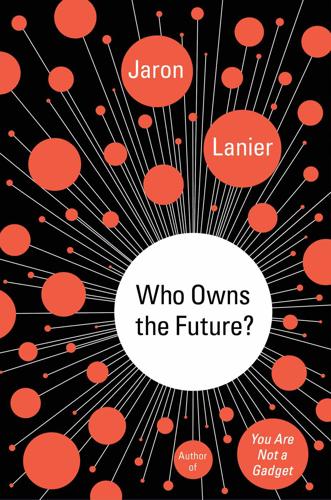
Who Owns the Future?
by
Jaron Lanier
Published 6 May 2013
When we make our world more efficient through the use of digital networks, that should make our economy grow, not shrink. Here’s a current example of the challenge we face. At the height of its power, the photography company Kodak employed more than 140,000 people and was worth $28 billion. They even invented the first digital camera. But today Kodak is bankrupt, and the new face of digital photography has become Instagram. When Instagram was sold to Facebook for a billion dollars in 2012, it employed only thirteen people. Where did all those jobs disappear to? And what happened to the wealth that those middle-class jobs created? This book is built to answer questions like these, which will only become more common as digital networking hollows out every industry, from media to medicine to manufacturing.
…
There is a legitimate claim of ambiguity on this point, and that ambiguity is completely typical of how problems present themselves in our modern world of networked big data. For instance, one might argue that some of the hundred-thousand-plus jobs that seem to have been lost in the transition from Kodak to Instagram will be made up for because people will be able to use photo sharing to sell their handicrafts more efficiently. While this might turn out to be true in one instance or another, I argue it is false in the big picture. My initial interest was motivated by a simple question: If network technology is supposed to be so good for everyone, why has the developed world suffered so much just as the technology has become widespread?
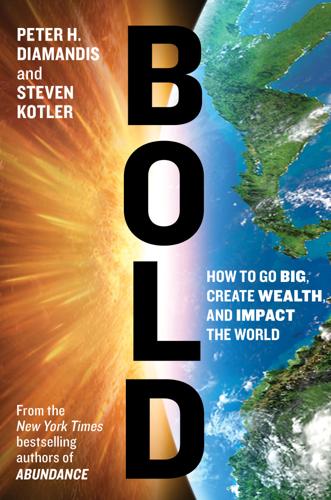
Bold: How to Go Big, Create Wealth and Impact the World
by
Peter H. Diamandis
and
Steven Kotler
Published 3 Feb 2015
Instagram was growing exponentially. With nearly 30 million users, it wasn’t just a photo-sharing service; it had become the photo-sharing service, with a very powerful social network to boot. Facebook didn’t want the competition, and they didn’t want to play catch-up. Thus, on April 9, 2012, just three months after Kodak filed for bankruptcy, Instagram and its thirteen employees were bought by Facebook for $1 billion.20 But how is this possible? How did Kodak—a hundred-year-old behemoth with 140,000 employees and a 1996 value of $28 billion—fail to take advantage of the most important photographic technology since roll film and end up in bankruptcy court?
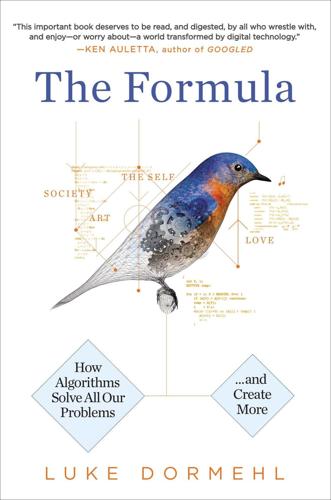
The Formula: How Algorithms Solve All Our Problems-And Create More
by
Luke Dormehl
Published 4 Nov 2014
The Great Restructuring What is notable about The Formula is how, in many cases, an algorithm can replace large numbers of human workers. Jaron Lanier makes this point in his most recent book, Who Owns The Future?, by comparing the photography company Kodak with the online video-sharing social network Instagram. “At the height of its power . . . Kodak employed more than 140,000 people and was worth $28 billion,” Lanier observes. “They even invented the first digital camera. But today Kodak is bankrupt, and the new face of digital photography has become Instagram. When Instagram was sold to Facebook for $1 billion in 2012, it employed only 13 people. Where did all those jobs disappear to? And what happened to the wealth that all those middle-class jobs created?”
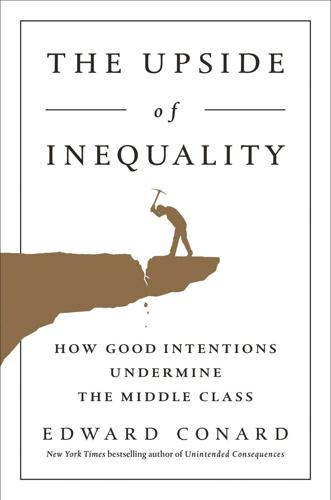
The Upside of Inequality
by
Edward Conard
Published 1 Sep 2016
The most frequently repeated accusation claims technology hollows out the middle class.1 Technology, so the argument goes, simplifies semi-skilled jobs while increasing the demand for the most sophisticated skills. Middle-class workers who can do higher-skilled work earn more, but the rest of the workers are pushed into lower-paying jobs. Digital photography, for example, displaced 140,000 Kodak employees, but Instagram had only thirteen employees when Facebook acquired it.2 The hollowing-out argument takes other forms. One version of the technology-hollows-out-the-middle-class argument admonishes that robots will eventually replace the middle and working classes.3 In Thomas Piketty’s version, investors collude to keep the return on capital high without restricting the supply of capital—the opposite of how oligopolies operate.

The Second Machine Age: Work, Progress, and Prosperity in a Time of Brilliant Technologies
by
Erik Brynjolfsson
and
Andrew McAfee
Published 20 Jan 2014
Kodak employed 145,300 people at one point, one-third of them in Rochester, New York, while indirectly employing thousands more via the extensive supply chain and retail distribution channels required by companies in the first machine age. Kodak made its founder, George Eastman, a rich man, but it also provided middle-class jobs for generations of people and created a substantial share of the wealth created in the city of Rochester after company’s founding in 1880. But 132 years later, a few months before Instagram was sold to Facebook, Kodak filed for bankruptcy.8 Photography has never been more popular. Today, seventy billion photos are uploaded to Facebook each year, and many times more are shared via other digital services like Flickr at nearly zero cost.
…
The evolution of photography illustrates the bounty of the second machine age, the first great economic consequence of the exponential, digital, combinatorial progress taking place at present. The second one, spread, means there are large and growing differences among people in income, wealth, and other important circumstances of life. We’ve created a cornucopia of images, sharing nearly four hundred billion “Kodak moments” each year with a few clicks of a mouse or taps on a screen. But companies like Instagram and Facebook employ a tiny fraction of the people that were needed at Kodak. Nonetheless, Facebook has a market value several times greater than Kodak ever did and has created at least seven billionaires so far, each of whom has a net worth ten times greater than George Eastman did.

Futureproof: 9 Rules for Humans in the Age of Automation
by
Kevin Roose
Published 9 Mar 2021
Tech companies didn’t set out to kill Kodak, but by changing the underlying consumer behavior from one in which people printed out their photos to one in which they uploaded them to websites, they effectively sealed its fate. Kodak declared bankruptcy in 2012; today, it has only about five thousand employees. It sounds strange to say that the other 140,000 jobs at Kodak were automated away, because that automation didn’t happen at Kodak. It happened at MySpace, Facebook, Instagram, Twitter, and the other companies that provided photo-sharing tools. But when those companies adopted technology to allow users to share their photos online without ever setting eyes on a film canister, the result was people in Rochester losing their jobs. Freelancers for Full-time Machines also allow companies to substitute part-time, temporary, and contingent workers for full-time employees, by breaking jobs down into standardized tasks that can be performed by relative amateurs and allowing small numbers of managers to supervise large, flexible workforces.

Augmented: Life in the Smart Lane
by
Brett King
Published 5 May 2016
Table 1.2: Comparison of Major US Sectors Earnings Performance (2013) Net Income (billions) Employees Net Income per Employee Bank of America 11.4 290,509 $39,241.47 Wells Fargo 21.9 265,000 $82,641.51 Citibank 13.9 251,000 $55,378.49 JP Morgan Chase 17.9 260,000 $68,846.15 Banking $61,526.90 Walmart 27.8 1,400,000 $19,857.14 The Home Depot 24.27 340,000 $71,382.35 Target 1.971 361,000 $5,459.83 Retail $32,233.11 Apple 37 50,250 $736,318.41 Microsoft 7.41 128,000 $57,890.63 Google 33.91 53,861 $629,583.56 Facebook 5.97 8,348 $715,141.35 IBM 47.81 434,246 $110,098.88 Tech $449,806.57 McDonald’s 28.1 440,000 $63,863.64 Yum! 13.1 523,000 $25,047.80 Fast Food $44,455.72 Source: Company annual reports Such efficiency, while great for shareholders, is not necessarily great for employment. To illustrate, Kodak at its peak employed 140,000 people, whereas Instagram, arguably the Millennials’ version of Kodak (acquired by Facebook for approximately US$715 million in stock in 2012), only had 13 employees at the time of the acquisition. So it could be postulated that technology is, on a net basis, bad for society when it comes to employment.

The Fourth Revolution: The Global Race to Reinvent the State
by
John Micklethwait
and
Adrian Wooldridge
Published 14 May 2014
Lower down the chain, people move on even more quickly: The average length of job tenure in the American retail sector, which now employs far more people than manufacturing, is closer to three years.1 The new high-tech firms usually employ a slither of their industrial predecessors. Some 145,000 people worked for Eastman Kodak in its heyday. When Facebook paid $1 billion for Instagram in April 2012, a few months after Kodak filed for bankruptcy, the photo-sharing firm was only eighteen months old and employed just 13 people.2 Three forces have turned the corporate world upside down. The first is embodied by Google itself: technology. It took telephones seventy-one years to penetrate half of American homes, electricity fifty-two years, and television three decades.

The Everything Store: Jeff Bezos and the Age of Amazon
by
Brad Stone
Published 14 Oct 2013
The Pentagram designers would feel ambivalent about the device when they finally saw it at the same time as the rest of the world. It was too cluttered with buttons, the design too confusing. After the project, Symon Whitehorn left Pentagram to go work at, of all places, Kodak. He hired Tom Hobbs as a contractor and together they created a unique digital camera that allowed picture-takers to impose on their photos the historical look of classic Kodachrome film. It presaged mobile-phone applications like Instagram, and, naturally, Kodak killed the project before it ever hit the market. Meanwhile, after Pentagram left the Kindle project, the device seemed nearly ready and close to launching.

Thinking Machines: The Inside Story of Artificial Intelligence and Our Race to Build the Future
by
Luke Dormehl
Published 10 Aug 2016
In the second decade of the twenty-first century, the impact of tech companies is no longer proportional to their size. When Instagram was acquired by Facebook for $1 billion in April 2012, it had just thirteen people on its employee books. By comparison, former photography giant Kodak – which is roughly the equivalent of Instagram in the pre-digital age – employed more than 140,000 people at its height. The size of these twentieth-century industrial giants made them more straightforward to regulate. This was equally true of the great sources of risk to the general public during the last century, such as nuclear technology.
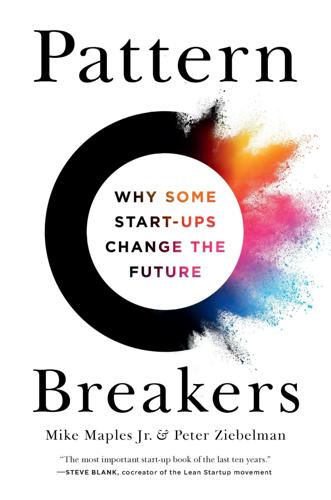
Pattern Breakers: Why Some Start-Ups Change the Future
by
Mike Maples
and
Peter Ziebelman
Published 8 Jul 2024
Digital cameras as well as the cameras embedded in smartphones became orders of magnitude better for normal people with each passing year. By the time Kodak saw digital photography as a threat, the improvement curve was climbing too steeply for it to respond. This is ironic since Kodak was one of the inventors of digital photography. The first camera phone was introduced in 1999 with a 0.11-megapixel camera. In 2007, the first iPhone shipped with a 2-megapixel camera. In 2012, the iPhone 5 shipped with 8 megapixels. That same year, Facebook bought Instagram (which had fewer than twenty employees) for a billion dollars, and Kodak declared bankruptcy. The first digital cameras didn’t empower enough people to take the kinds of pictures they wanted because they had such low resolution.

WTF?: What's the Future and Why It's Up to Us
by
Tim O'Reilly
Published 9 Oct 2017
If we are honest with ourselves, each of us has many such moments, when we realize that the world has moved on and we are stuck in the past. It is this mental hiccup that leads to many a failure of insight. Famously, Jaron Lanier (and many others) have made the comparison between Kodak, which at its height had 140,000 employees, and Instagram, which had only 13 when it was sold to Facebook for $1 billion in 2012. It’s easy to overlay the afterimage of Kodak, and say, as Lanier did, that the jobs have gone away. Yet for Instagram to exist and thrive, every phone had to include a digital camera and to be connected to a communications network, and that network had to be pervasive and data centers had to provide hosting services that allow tiny startups to serve tens of millions of users.

Blockchain Revolution: How the Technology Behind Bitcoin Is Changing Money, Business, and the World
by
Don Tapscott
and
Alex Tapscott
Published 9 May 2016
Gannett could have created Craigslist or Kijiji. eBay would have been a natural play for the Yellow Pages. Microsoft had the resources to create Google or any number of business models based on the Internet rather than the personal computer. Why didn’t NBC invent YouTube? Sony could have preempted Apple’s iTunes. Where was Kodak when it was time for Instagram or Pinterest to be invented? What if People or Newsweek had come up with BuzzFeed or Mashable? As we wrote at the beginning of this tome, “It appears that once again the technological genie has been unleashed from its bottle . . . now at our service for another kick at the can—to transform the economic power grid and the old order of human affairs.
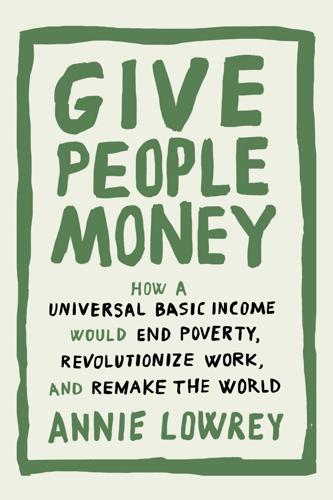
Give People Money
by
Annie Lowrey
Published 10 Jul 2018
That same dynamic is writ large around the country. Brick-and-mortar retailing giant Walmart has 1.5 million employees in the United States, while Web retailing giant Amazon had a third as many as of the third quarter of 2017. As famously noted by the futurist Jaron Lanier, at its peak, Kodak employed about 140,000 people; when Facebook acquired it, Instagram employed just 13. The scarier prospect is that more and more jobs are falling to the tide of tech-driven obsolescence. Studies have found that almost half of American jobs are vulnerable to automation, and the rest of the world might want to start worrying too.
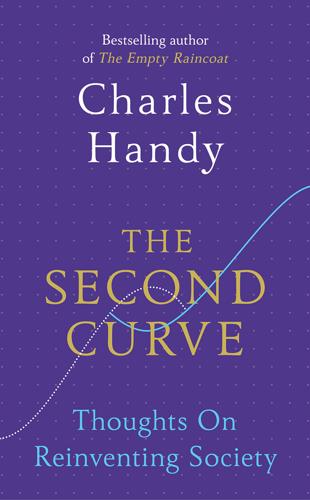
The Second Curve: Thoughts on Reinventing Society
by
Charles Handy
Published 12 Mar 2015
Researchers in Oxford University suggest that 47 per cent of today’s jobs will be replaced by computers within the next two decades – 250 million in just the next one, says the McKinsey Global Institute. By the time you read this these numbers may well look dated. What will replace those 250 million jobs? Kodak at its height employed 145,000 people. Facebook employs just 6,000 while Instagram, when it was bought by Facebook for around $1 billion, employed just 13. Two years later Facebook paid $19 billion for WhatsApp with 55 employees but with half a million customers and growing. In earlier technology shifts the jobs that were displaced were quickly replaced by new ones.
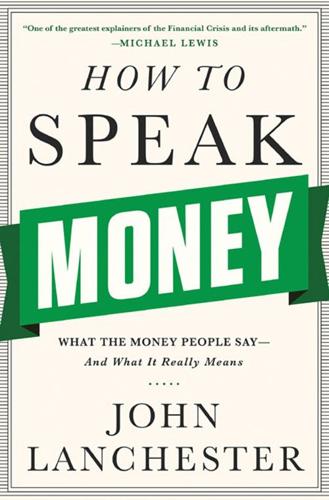
How to Speak Money: What the Money People Say--And What It Really Means
by
John Lanchester
Published 5 Oct 2014
Whole sectors of the economy have been hollowed out by the Internet and by outsourcing abroad. There’s a very good description of it in Jaron Lanier’s book Who Owns the Future?: At the height of its power, the photography company Kodak employed more than 140,000 people and was worth $28 billion. They even invented the first digital camera. But today Kodak is bankrupt, and the new face of digital photography has become Instagram. When Instagram was sold to Facebook for a billion dollars in 2012, it employed only thirteen people. Where did all those jobs disappear to? And what happened to the wealth that all those middle-class jobs created? 46 One of the places where hollowing out can be seen most clearly is in the English countryside.
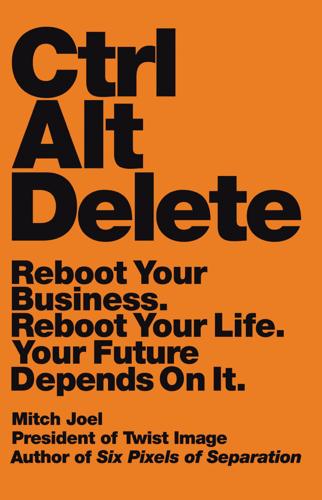
Ctrl Alt Delete: Reboot Your Business. Reboot Your Life. Your Future Depends on It.
by
Mitch Joel
Published 20 May 2013
Perhaps it was my rock ’n’ roll upbringing that did it. Regardless, the realization is this: Some people perceive changing jobs and switching industries as reckless. Take a cold, hard look at these people in this day and age and ask yourself: How secure are their jobs? We live in a time where a company like Kodak can collapse while at the same time a simple photo-sharing app called Instagram gets bought for a billion dollars by Facebook. Which company do you think feels more secure? The answer is simple: neither. Welcome to purgatory (again), and welcome to a career that will have to embrace the squiggle. ACCEPT IT: THERE IS NO GOLD WATCH IN YOUR FUTURE.

Exponential: How Accelerating Technology Is Leaving Us Behind and What to Do About It
by
Azeem Azhar
Published 6 Sep 2021
‘When you’re talking to a bunch of corporate guys about 18 to 20 years in the future, when none of those guys will still be in the company, they don’t get too excited about it,’ Sasson later recalled.37 Kodak did go on to develop a range of digital cameras; in fact, theirs was one of the first to market. The company even recognised the power of the internet, buying Ofoto, a photo-sharing site in 2001, nine years before Instagram was founded. But institutional knowledge – the established consensus about what their business was about – held them back from building anything nearly as popular as Instagram, which would become the most successful photo business in the world.
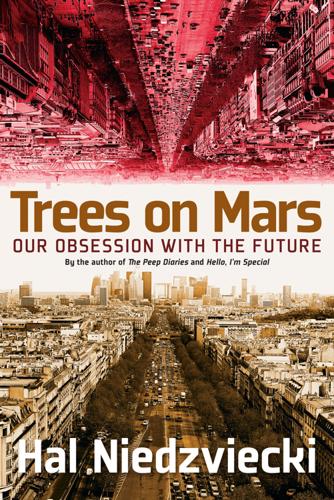
Trees on Mars: Our Obsession With the Future
by
Hal Niedzviecki
Published 15 Mar 2015
At the height of its power, the photography company Kodak employed more than 140,000 people worldwide and was worth twenty-eight billion dollars.48,49 They even invented the first digital camera. Eastman Kodak Co. generated good jobs and good salaries for upstate New York’s Rochester area for multiple decades. But in 2012 Kodak filed for bankruptcy, and the new face of photography is found on sites like Instagram and Flickr which together process and showcase billions of photos—pixilated into digital information—every year. When Instagram was sold to Facebook for a billion dollars in 2012, it employed only thirteen people.50 As economist and former Clinton-era Secretary of the Treasury Lawrence Summers notes in an op-ed, few of the companies that helped displace Kodak can lay claim to “a comparable impact” in terms of creating prosperous jobs in an entire region for multiple generations.

American Girls: Social Media and the Secret Lives of Teenagers
by
Nancy Jo Sales
Published 23 Feb 2016
“I don’t even like to call it fame,” she said. “I just like to upload cool pictures. I’m just, like, a normal girl.” Behind the Lens Kids started having their own cameras, en masse, in the 1960s. Kodak Instamatics, which came out in 1963, were inexpensive ($16) and easy to use, durable and small, the perfect size to fit in a child’s pocket or the upper tray of a footlocker on its way to summer camp. The Instagram logo, in a conscious nod, echoes the look of the early Instamatics—a dark stripe on top, metallic on the bottom, with a round flat lens and viewfinder in the middle. The logo was nostalgic, also a confident announcement of how this new mobile app would continue to popularize photography as successfully as its symbolic predecessor.
…
Her hair is in ringlets, a corsage is pinned to the strap of her gown; she’s beaming. The boy, standing beside her, is looking suave in a white tux. The message: cameras were tools for creating an idealized self, and pictures were a kind of self-promotion. And the ideal girl (in Kodak’s view, a pretty, blond white girl) would have the attention of boys. If only everybody could see how popular she was. Instagram gave girls that opportunity. The way many girls use the app is not so different from how girls have been taught to use photography for decades. The difference now lies in the chance to show the whole world one’s beauty, boyfriends, special moments, and clothes, not just the other kids in school.

The Black Box Society: The Secret Algorithms That Control Money and Information
by
Frank Pasquale
Published 17 Nov 2014
Jaron Lanier, Who Owns the Future? (New York: Simon & Schuster, 2013). “At the height of its power, the photography company Kodak employed NOTES TO PAGES 6–10 223 more than 140,000 people and was worth $28 billion. They even invented the first digital camera. But today Kodak is bankrupt, and the new face of digital photography has become Instagram. When Instagram was sold to Facebook for a billion dollars in 2012, it employed only thirteen people.” Ibid., 2. 16. Frederic Bloom, “Information Lost and Found,” California Law Review 100 (2012): 635– 690. 17. Obfuscation contributes to complexity, which is sometimes the natural result of modern business, but it is also, frequently, contrived for no good end.
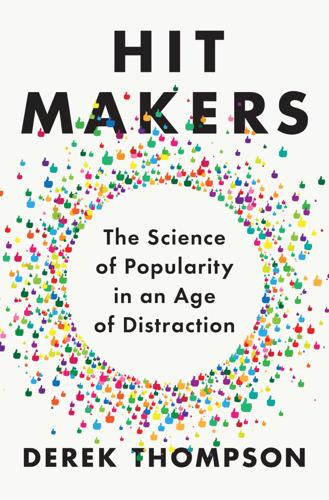
Hit Makers: The Science of Popularity in an Age of Distraction
by
Derek Thompson
Published 7 Feb 2017
If the marketplace for nineteenth-century piano music was crowded, the emporium of photo-sharing applications in the last few years is downright mayhem. In 1999, the world took eighty billion photos and bought seventy million cameras, according to Kodak’s 2000 annual report. Today, the world shares more than eighty billion photos every month on several billion phones, tablets, computers, and cameras. Like several other apps, Instagram lets users take photos and add retro-cinematic filters. The design was close to perfect for its purpose: simple and beautiful, with intuitive ways to edit and share images from people’s lives. But there were many simple, beautiful apps in this space, and Instagram did not invent the idea of filters.
…
immigration to the United States soared: Yearbook of Immigration Statistics, Department of Homeland Security, 2008. the highest-grossing movie in America: Box Office Mojo, www.boxofficemojo.com/, accessed March 1, 2016. according to Kodak’s 2000 annual report: Benedict Evans Blog, http://ben-evans.com/benedictevans/2014/6/24/imaging. world shares more than eighty billion photos: “2016 Internet Trends Report,” www.kpcb.com/blog/2016-internet-trends-report. Instagram did not invent the idea of filters: Robert Scoble interview with Kevin Systrom on SoundCloud, https://soundcloud.com/scobleizer/my-first-interview-of-kevin. early versions of the app to San Francisco tech tycoons: Robert Scoble, comment on “How Did Instagram Build Up Its Community in Its Early Days?

Utopia for Realists: The Case for a Universal Basic Income, Open Borders, and a 15-Hour Workweek
by
Rutger Bregman
Published 13 Sep 2014
Whereas in 1964 each of the four largest American companies still had an average workforce of about 430,000 people, by 2011 they employed only a quarter that number, despite being worth twice as much.14 Or take the tragic fate of Kodak, inventor of the digital camera and a company that in the late 1980s had 145,000 people on its payroll. In 2012, it filed for bankruptcy, while Instagram – the free online mobile photo service staffed by 13 people at the time – was sold to Face-book for $1 billion. The reality is that it takes fewer and fewer people to create a successful business, meaning that when a business succeeds, fewer and fewer people benefit.

User Friendly: How the Hidden Rules of Design Are Changing the Way We Live, Work & Play
by
Cliff Kuang
and
Robert Fabricant
Published 7 Nov 2019
Hence the name Toperator. 1936–45: B-17 FLYING FORTRESS LANDING FLAP CONTROLS, Alphonse Chapanis Based on extensive user research into the causes of pilot error in World War II, Alphonse Chapanis introduced airplane levers that could be identified in the pilot’s hand by their shapes. Chapanis’s system of shape-coding remains in use in all commercial aircraft today. 1947: POLAROID INSTANT CAMERA, Edwin Land and William Dorwin Teague At a time when Kodak dominated photography, Polaroid upended the business by collapsing the entire messy process of film development into a user-friendly format that provided immediate gratification to consumers. Instagram’s original logo depicted a Polaroid OneStep camera. 1950: THE HUMAN USE OF HUMAN BEINGS: CYBERNETICS AND SOCIETY, Norbert Wiener Cybernetics, which began by formalizing how machines might approximate the responsiveness of humans, eventually influenced modern computer science.

The Meritocracy Trap: How America's Foundational Myth Feeds Inequality, Dismantles the Middle Class, and Devours the Elite
by
Daniel Markovits
Published 14 Sep 2019
See Catherine Rampell, “When Cheap Foreign Labor Gets Less Cheap,” New York Times, December 7, 2012, accessed November 18, 2018, https://economix.blogs.nytimes.com/2012/12/07/when-cheap-foreign-labor-gets-less-cheap/?partner=rss&emc=rss&_r=0. increased by over 15 percent: See Harding, “Technology Shakes Up US Economy.” it was sold to Facebook for $1 billion: On Kodak, see Susan Christopherson and Jennifer Clark, Remaking Regional Economies: Power, Labor, and Firm Strategies in the Knowledge Economy (New York: Routledge, 2007), 57–84. On Instagram, see Scott Timberg, “Jaron Lanier: The Internet Destroyed the Middle Class,” Salon, May 12, 2013, accessed November 18, 2018, www.salon.com/2013/05/12/jaron_lanier_the_internet_destroyed_the_middle_class/.